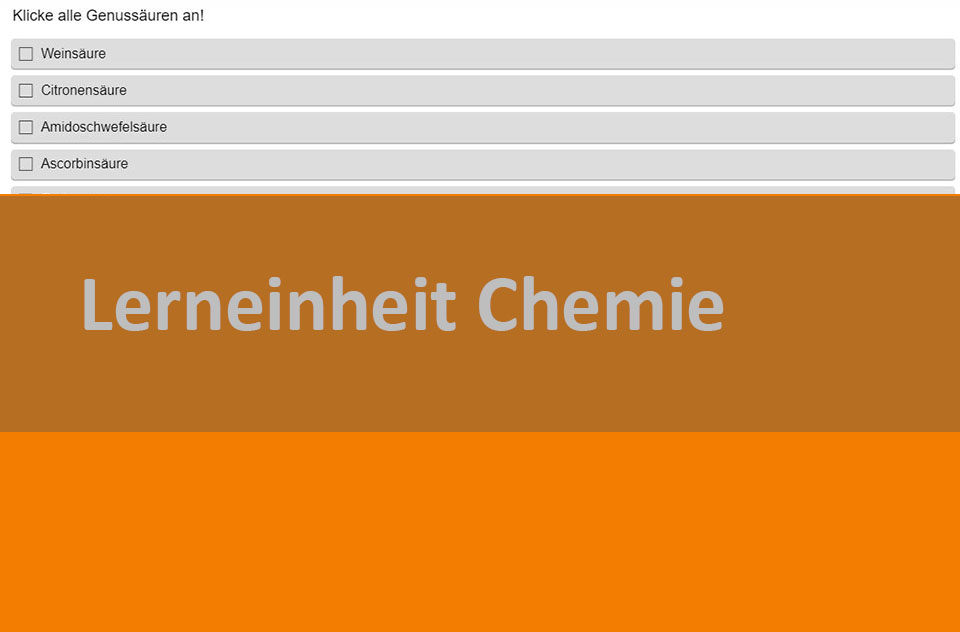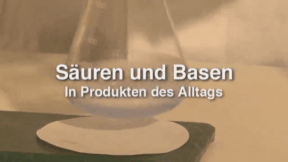
55502492
Säuren und Basen
In 11 interaktiven Modulen und in interaktiven Videos wird Wissen zu Säuren und Basen vermittelt und abgefragt.
Das Medium bietet H5P-Aufgaben an, die ohne zusätzliche Software verwendbar sind.
Durch interaktive Aufgabentypen wird das audiovisuelle und interaktive Lernen einfach.
Lernen macht jetzt Spaß!
Included Tasks
- I Säuren und Basen - Lückentext
- II Säure oder Base? interaktive Aufgabe
- III Eigenschaften von Säuren und Basen - interaktive Aufgabe
- IV Säuren im Alltag - interaktives Video
- V pH-Wert-Farbskala - interaktive Aufgabe
- VI Basen im Alltag - interaktives Video
- VII Von Brønsted zu Lewis - Lückentext
- VIII Begriffe im Buchstabengitter - interaktive Aufgabe
- IX Wirkungen - interaktive Aufgabe
- X Säuren und Basen - Interaktive Aufgaben
Curriculum-centred and oriented towards educational standards
Matching
Acids and Bases
We can find acids and bases in every supermarket, some of them in our food, others in cleaning agents. In everyday products, acids and bases as well as acidic and alkaline reacting salts have extremely different functions. In food, acids are either present or added as flavouring agents such as citric acid, tartaric acid and acetic acid, as antioxidants such as ascorbic acid or generally as acidifiers, sequestrants (citric acid and tartaric acid) and preservatives (acetic acid).








